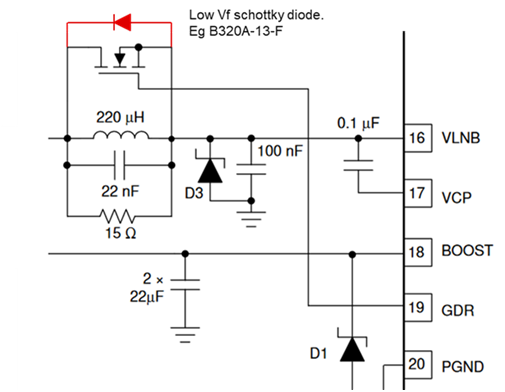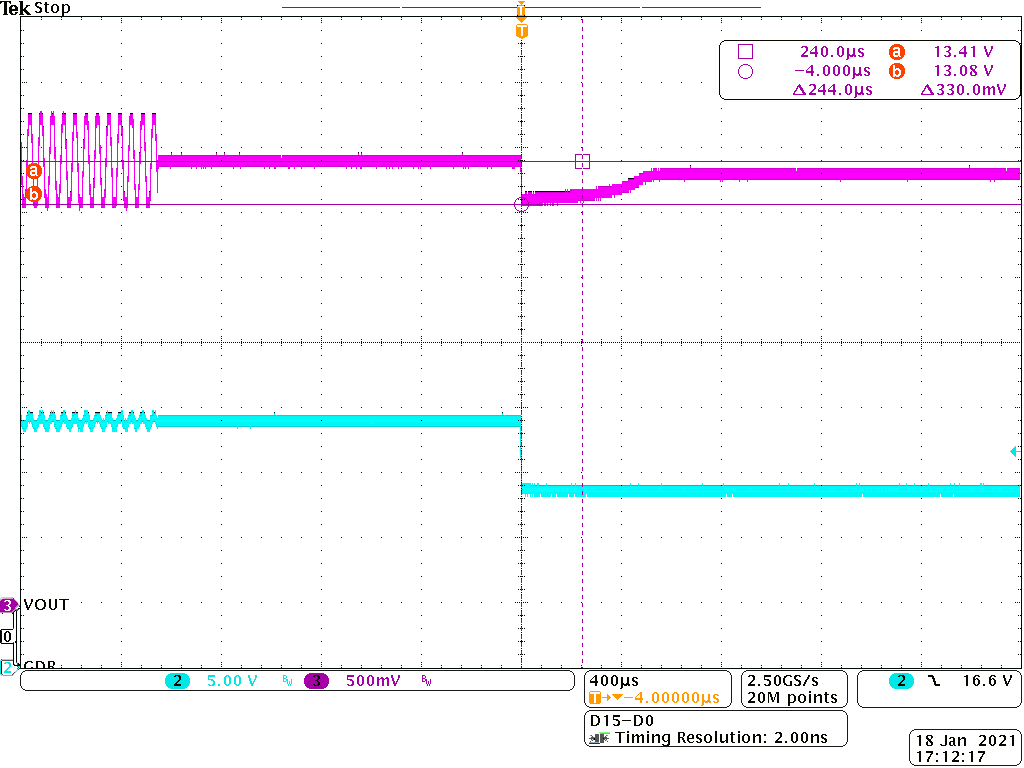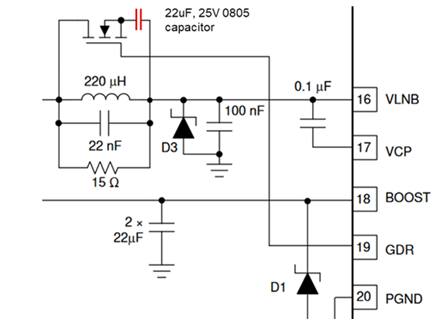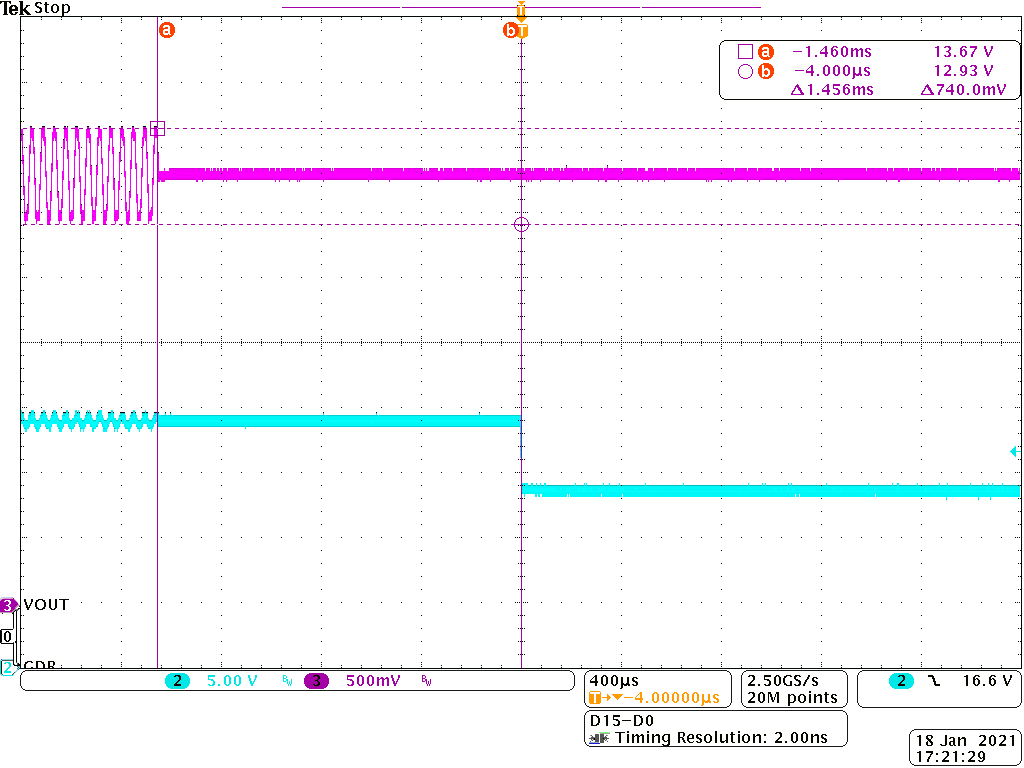-
DiSEqC 2.x Filter Optimization
DiSEqC 2.x Filter Optimization
Trademarks
DiSEqC are trademarks of Eutelsat Communications SA.
All trademarks are the property of their respective owners.
1 Introduction
The DiSEqC™ 2.x protocol supports two way communications for receiver or controller and accessory or peripheral modes. Figure 1-1 shows a typical DiSEqC 2.x implementation using TPS65235.
 Figure 1-1 Typical DiSEqC™ 2.x Implementation
Figure 1-1 Typical DiSEqC™ 2.x ImplementationIn accessory or peripheral mode a 22-kHz tone is received at VOUT. The tone is blocked from reaching VLNB by the LCR filter. This is a band stop filter presenting 15-Ω impedance at 22 kHz. The tone is passed via the 10 nF, 10-kΩ RC filter to the DIN pin. The DC current for the LNB power flows from VLNB to VOUT via the 220-µH inductor which has low DC resistance.
In receiver or controller mode, the LNB power supply transmits a 22-kHz tone on VOUT. When transmitting, a FET is turned on to bypass the LCR filter and avoid unwanted attenuation of the 22-kHz tone. The lowest resistance DC path is through this FET when on. However, when the FET is turned off, the current cannot ramp instantly in the inductor and initially the current flows through the 15-Ω resistor. The voltage dropped across the resistor leads to a sudden drop or negative spike in the VOUT signal, which subsequently decreases as the inductor current ramps. For a 600-mA LNB current, the drop across the resistor could be as high as 9 V but it is clamped at approximately 700 mV by the body diode of the FET as seen in Figure 1-2. This negative spike can be incorrectly interpreted by some LNBs and can lead to incorrect communication and missed commands.
 Figure 1-2 Negative Voltage Spike Clamped to Approximately 700 mV by FET Body Diode
Figure 1-2 Negative Voltage Spike Clamped to Approximately 700 mV by FET Body Diode2 Solutions
To avoid this negative spike, a couple of options are available. One is to add a Schottky diode across the FET as shown in Figure 2-1. This diode clamps the spike similar to the FET body diode, but with a lower forward voltage. Figure 2-2 shows the output with a B320A-13-F Schottky diode added. The spike is still present but is reduced to approximately 330 mV.
 Figure 2-1 Schottky Diode Added to Clamp
Negative Spike
Figure 2-1 Schottky Diode Added to Clamp
Negative Spike Figure 2-2 Spike Clamped to Approximately 330 mV by Adding Schottky Diode Across
the FET
Figure 2-2 Spike Clamped to Approximately 330 mV by Adding Schottky Diode Across
the FETAnother solution is to add a DC blocking capacitor in series with the FET as shown in Figure 2-3. In this way, when the FET is turned on, the 22-kHz tone passes through the capacitor whose impedance is approximately 330 mΩ at 22 kHz. However, the DC current is blocked and continues to flow via the inductor. So when the FET is turned off there is no change in the DC current flow and no negative spike is generated (Figure 2-4). A 22-µF, 25-V with 0805 capacitor was used for this test, but similar results were achieved with a 10-µF, 25-V capacitor. In normal working conditions, the voltage across the capacitor is less than 2 V but, as the output may be subjected to surges, a 25-V rated capacitor is recommended.
 Figure 2-3 DC Blocking Capacitor Added in Series With FET
Figure 2-3 DC Blocking Capacitor Added in Series With FET Figure 2-4 Inserting a 22-µF Blocking
Capacitor Removes the Negative Spike Entirely
Figure 2-4 Inserting a 22-µF Blocking
Capacitor Removes the Negative Spike Entirely